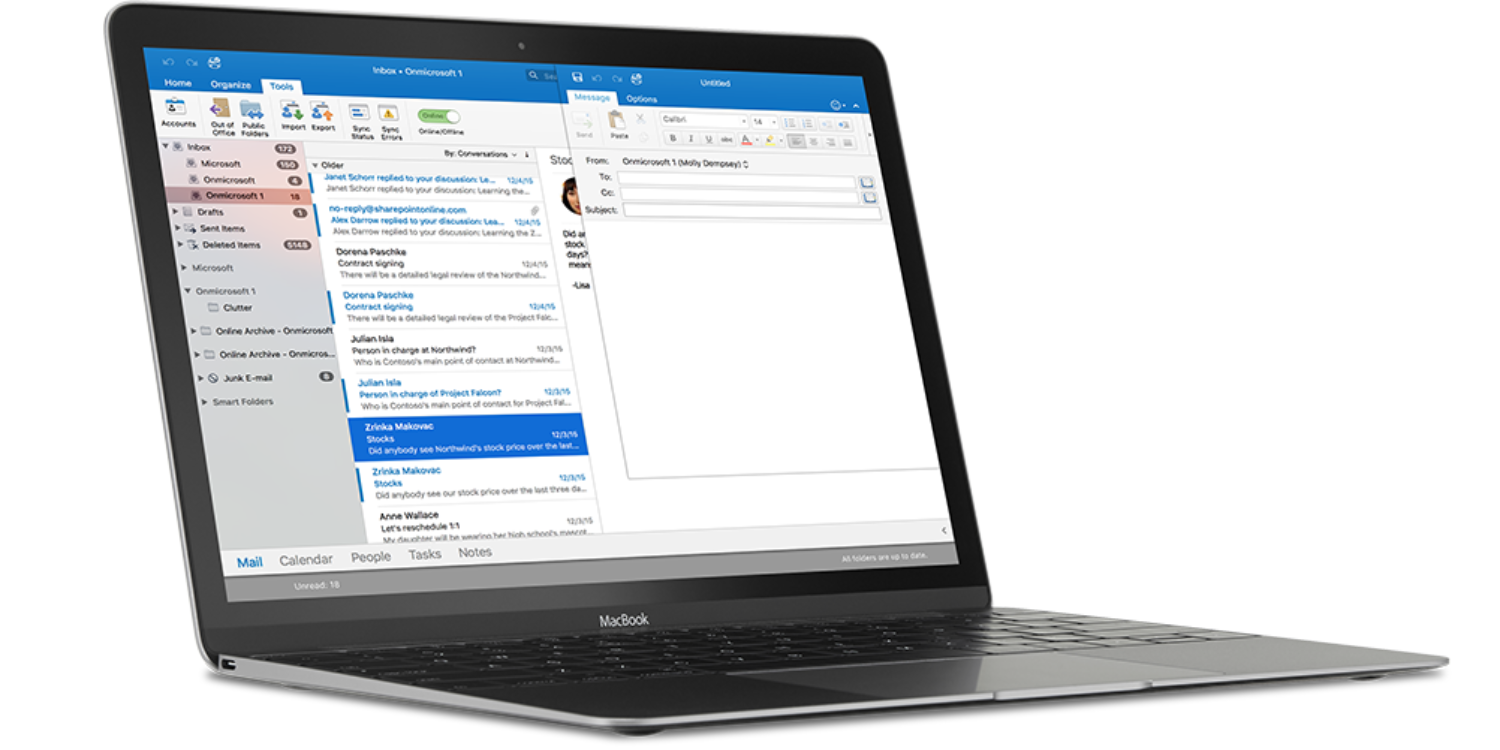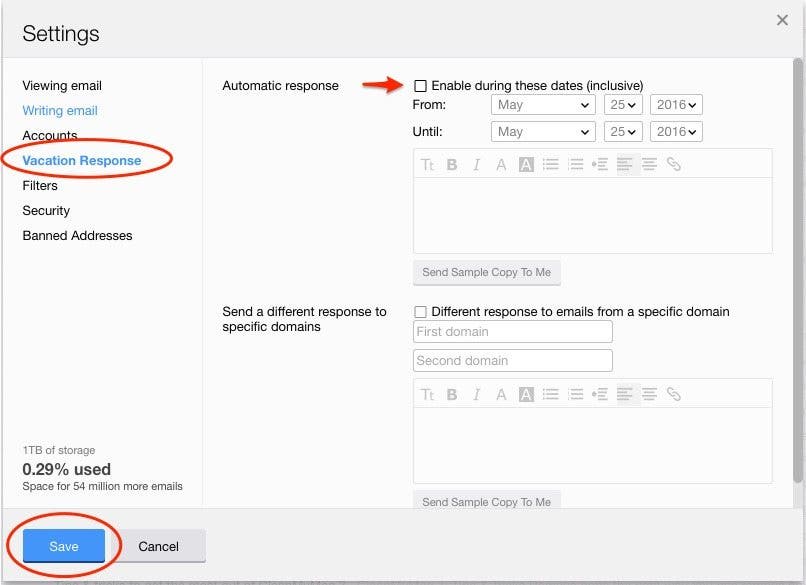
Download this app from Microsoft Store for Windows 10, Windows 8.1, Windows 10 Mobile, Windows 10 Team (Surface Hub), HoloLens. See screenshots, read the latest customer reviews, and compare ratings for Mail and Calendar. You can save Outlook email as a PDF on a Mac or PC for to keep a copy of an important correspondence. Microsoft Outlook for Mac is what Apple Mail would be if you threw in a bunch of features and made it look like every other Microsoft app. Unlike the Outlook Mail app on iOS which is praised by many, Outlook for Mac feels like a cluttered mess designed by a team of programmers 10 years ago. It is, however, packed with several great email features.
Apple and Microsoft go toe-to-toe on several fronts like Word processing apps. However, Apple aims to offer a solid email experience with the Mail app on iOS, iPadOS, and macOS, but it still leaves a lot to be desired. That's why you can't help but look at a viable alternative from Microsoft's camp - Outlook for Mac.
Recently, Microsoft revealed the brand-new look for Outlook for Mac, which is available through the Fast Insider group. That coupled with a bunch of other software integration in the Outlook for Mac app makes it a viable rival to the Apple Mail app.
In this post, we shall compare Outlook Mail for Mac to the default Apple Mail app. The comparison will be based on UI, Email Organization, Compose Mail, features, and apps integration. Let’s get started.
- Mar 04, 2019 Best Mac email client for Microsoft email users looking for an Outlook alternative Built exclusively for the Microsoft mail ecosystem, Hiri is a smart mail app designed for Exchange, Office 365, Outlook.com, Live.com, Hotmail.com, and MSN.com. Like Mailplane does for Gmail above, Hiri won't work with non-Microsoft mail services.
- Jan 28, 2015 Outlook for iOS works with Microsoft Exchange, Office 365, Outlook.com (including Hotmail and MSN), Gmail, Yahoo Mail, and iCloud.-To make an in-app purchase of a Microsoft 365 Family or Personal subscription, open the app, go to Settings, and tap on Upgrade next to your Outlook.com or Hotmail.com account.
Cross-Platform Availability
I know cross-platform availability doesn’t matter much in an Email app. But I’m mentioning here so that you can expect a seamless experience on every platform. Apple Mail is only available on iOS, macOS, and iPadOS.
On the other hand, Microsoft Outlook is accessible on Android, iOS, Windows, macOS and Web.
Download Microsoft Outlook for MacAlso on Guiding Tech
Top 5 Apple Mail Alternatives for iPhone
Read More
User Interface and Customization
Microsoft's plans to redesign the interface of Outlook for Mac is much needed to keep it in line with other platforms. There's a catch when it comes to trying out the new Outlook for Mac. You'll have to install it along with other Office apps through an ISO installer.
When you open Outlook for Mac, you'll notice the Compose (New Message) button and Search bar at the top. On the left sidebar, you'll find your email accounts and other folders. It is impressive how Microsoft uses a column layout style and adds the calendar integration to the extreme right. You won’t have a hard time navigating the new look.
You can change the default fonts for new mail, reply mail from the Outlook settings.
Apple Mail looks quite vanilla compared to the Outlook. The default interface shows the Email as well as folders on the left sidebar, messages list in the center, and mail view on the right. Interestingly, Apple Mail offers several customization options.
Go to Mail > Preferences > Fonts & Colors. From there, you can change the message list font, message font, and even fixed-width font. Apple Mail also allows you to change the list view preview from the default 2 lines to 3 lines or more.
Compose Mail
Apple Mail offers a bunch of editing options when you compose a mail. While writing a mail, you can change the font type, size, color, play with bold, italic options, and even add a bullet or number list.
I like how the Mail app lets you add the picture or scanned documents directly from the connected iPhone.
Outlook’s compose menu toolbar is richer than Apple Mail. It lets you highlight the words. You can even add tables and signature. Guess what? Outlook for Mac also supports templates. Yes, you can create ready-to-use templates with images and text. You can save them for later use. While composing an email, just tap on the three-dot menu above and select view templates and add a relevant one in the mail.
Such templates can be when you are composing emails related to specific subjects like marketing surveys, inquiries, and so on. Just create a master template with necessary text for each type or topic of emails you use often.
Also on Guiding Tech
Top 7 Useful macOS Apps to Optimize Your Mac
Read MoreAdditional Features
If you like flagging emails, the Apple Mail offers a couple of options for neater organization. For instance, you can assign an orange flag for Bank mails and green flag to all finance mails. Most mail apps only support the normal flag (Red color) option.
From the flagged mail section, you can quickly jump to the exact mail that you are looking for. Apple Mail also supports Rules. You can select Mail > Preferences > Rules and create personalized email rules for you. I have created a rule to archive all the emails that come with Coronavirus in the subject.
We can only hope that Apple integrates services such as Reminders, Calendar, and Notes in the Mail app. It would be easy to set reminders for an email or create an event for the Mail app meeting.
Outlook for Mac app also supports to Rules options. I would highly recommend you to set some of the effective rules to organize emails like a pro. The app comes with Calendar, Sticky Notes, and Microsoft To-Do integration.
It works like a charm. If you are using Outlook as your mail provider and if you flag an email in it, the mail automatically gets saved into the Flagged mail section in the Microsoft To-Do app.
Email Export and Third-Party Integration
Apple allows you to export any mail as a PDF file menu. Open any mail and go to File > Export as PDF, and it will create a PDF file from the selected mail. Unfortunately, the app doesn’t offer any third-party app integration.
Microsoft offers a dedicated third-party app store. You can tap on the three-dot menu and go to Get add-ins from a dedicated store in Outlook.
For example, I use OneNote and Trello extensions in Outlook to directly send the selected mail to the OneNote or Trello.
Also on Guiding Tech
#macos
Click here to see our macos articles pageUse Mail Like a Pro on Mac
The comparison above gives you a clear view of the Apple Mail and Outlook’s strength and weaknesses. Apple Mail wins with the simple UI, mail organization, and iPhone integration. However, several folks complain that it is sluggish and buggy. Also, it doesn't translate to a pleasant performance on iOS either. Outlook for Mac brings a breath of fresh air with Microsoft apps integration, richer compose menu, and third-party add-ins. Hopefully, the Outlook for iOS also gets a facelift soon. As of now, I’m sticking with Microsoft’s offering. What about you? Sound off in the comments section below.

Next up:Recently got a new Mac? Read the post below find the best Mac apps to stay organized.
The above article may contain affiliate links which help support Guiding Tech. However, it does not affect our editorial integrity. The content remains unbiased and authentic.Read Next7 Best Mac Apps to Stay OrganizedAlso See
Outlook On Mac
#macos #emailDid You Know
Ray Tomlinson is credited as the first person to send an email message.
More in Mac
How to Enable and Use Breakout Rooms in Zoom
Mail User Guide
Mail can import email messages that have been exported in mbox format from other email apps, and import mailboxes exported from Mail on a Mac. You can export mailboxes in mbox format.
Import mailboxes
In the Mail app on your Mac, choose File > Import Mailboxes.
Select a source in the list, read the information that appears below the list, then click Continue.
If you’re importing a mailbox exported from Mail or a folder in the ~/Library/Mail/V7 folder on another Mac, select Apple Mail. To get to the Mail folder on a Mac, click the desktop to make sure you’re in the Finder, press and hold the Option key, choose Go > Library, then click the Mail folder.
If you’re importing messages from a Windows or UNIX computer, select “Files in mbox format,” then locate the folder containing the files.
Reorganize the imported messages, if you like.
The messages are in a new mailbox called Import in the Mail sidebar. You can drag folders and messages from the Import mailbox to new or existing mailboxes, then delete the Import mailbox.
Export mailboxes
In the Mail app on your Mac, select one or more mailboxes, then choose Mailbox > Export Mailbox.
Choose a folder or create a new folder, then click Choose.
Mail exports the mailboxes as .mbox packages. If you previously exported a mailbox, Mail doesn’t overwrite the existing .mbox file; it creates a new .mbox file, such as My Mailbox 3.mbox.